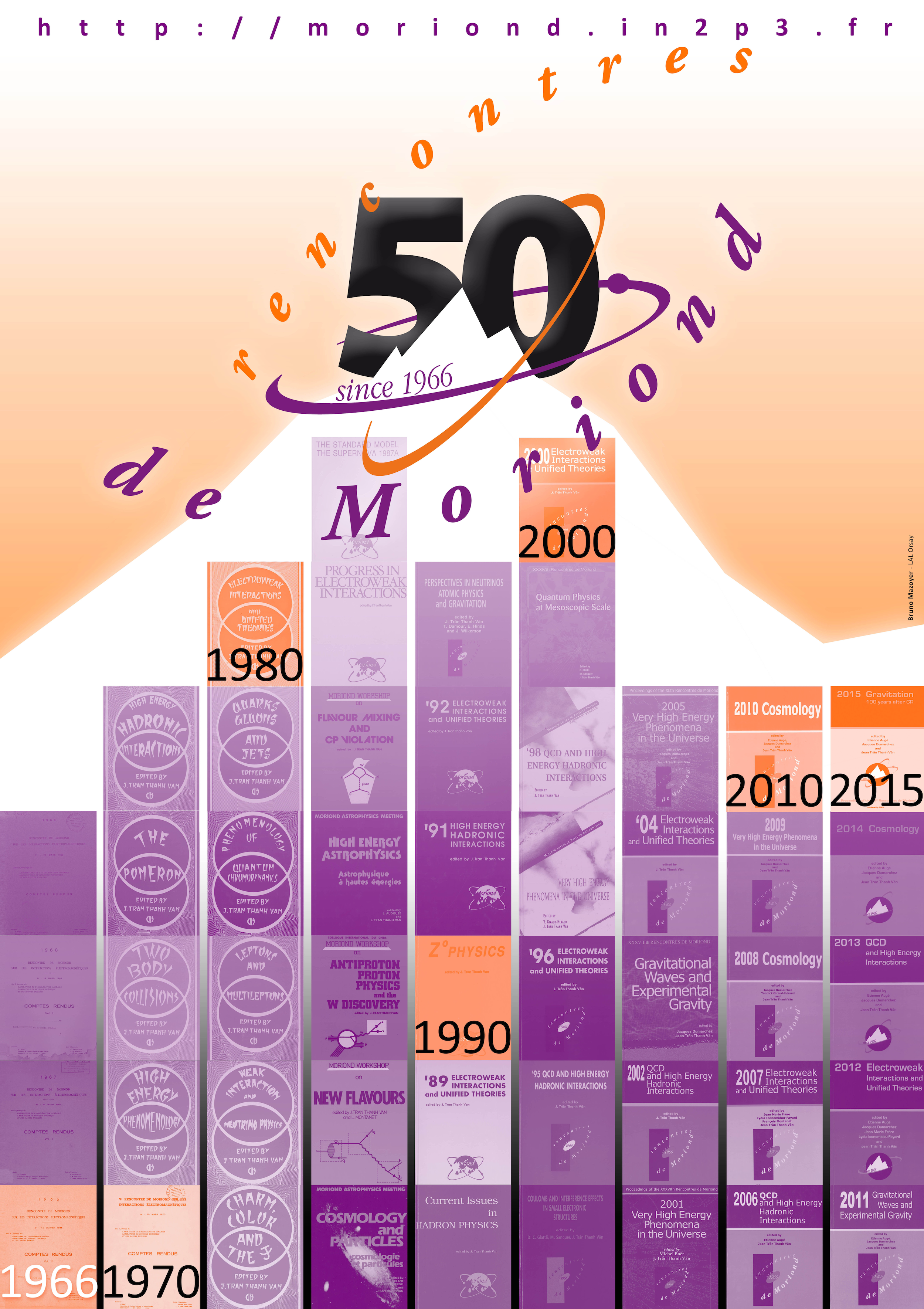ATLAS presents new results at Moriond conference
21 March 2016 | By

This year’s 50th anniversary edition of the “Moriond Electroweak and Unified Theories” conference at La Thuile in Italy highlighted the recently announced observation of gravitational waves from a binary black hole coalescence by the LIGO/Virgo collaboration, as well as the presentation and discussion of the first results from the LHC full-year 2015 data samples (“Run 2”) collected by the LHC experiments at unprecedented 13 TeV proton-proton collision energy. The ATLAS and CMS collaborations each showed numerous new Run 2 results at the conference (see links below).
ATLAS also presented several important Run 1 measurements in the domain of rare and precision physics. Among these are the total and differential cross-sections of “di-boson” W+W and W+Z production. Both are important tests of the Standard Model showing that accurate higher-order theoretical calculations are needed to describe the experimental results. ATLAS also showed new searches for the so-called "vector-boson scattering", which describes a specific process of four-boson interactions that would infinitely rise in cross-section with the proton-proton collision energy were there not the Higgs boson to moderate this rise. Such processes are thus intimately related to the electroweak symmetry breaking sector of the Standard Model.
ATLAS also presented their full Run 1 result of a search for the extremely rare decay of a Bs meson to a muon pair (a few 10–9 decay probability). That decay was observed by CMS and LHCb in 2014 from a combination of their datasets with a measured branching fraction in agreement with the expectation. The ATLAS analysis resulted in a signal that is smaller than expected but still compatible with the Standard Model at the two standard deviation level.
Among the 13 TeV Run 2 results, ATLAS presented Standard Model and Top physics measurements of single and double W/Z boson production, top-antitop production as well as so-called “single top” production which is an electroweak interaction process. ATLAS also presented a preliminary 13 TeV measurement of top-antitop production associated with a W or Z boson. These processes have low cross-sections, but because of their topology represent important backgrounds to the search for Higgs boson production with a top-antitop pair. The measurements are found to be in agreement with the Standard Model predictions within the currently large statistical uncertainties. First measurements of inclusive Higgs boson production in the cleanest four-lepton and two-photon decay channels resulted in smaller signals than expected, which are however fully compatible with the Standard Model as the data sample is still modest.
ATLAS presented a large set of searches for new physics at the conference. Such searches are the experiment’s primary focus for the early Run 2 phase due to the increased sensitivity to production of putative new high-mass states at the 13 TeV collision energy. The analyses covered searches for additional charged or neutral Higgs boson production, supersymmetry or exotic heavy quark partners, and the production of heavy resonances decaying to jets, bottom or top quarks, W, Z or Higgs bosons, leptons or photons, and combinations of these. Also searches for new heavy long-lived particles that travel through the detector with significantly less than the speed of light were presented. None of these searches showed a significant deviation from the Standard Model expectations.
The search for a heavy scalar (spin-0) resonance decaying to two photons presented by ATLAS in December 2015 exhibited an excess of events at around 750 GeV in the diphoton mass spectrum. At the Moriond conference, a preliminary update of this analysis was shown that included additional cross-checks and a search for a spin-2 particle (inspired by models with strong gravity), which features less stringent transverse momentum requirements and a different method for estimating the background. This and the original spin-0 analysis see a similar excess of events at 750 GeV with largely overlapping datasets. The global significances of this excess, taking into account the increased probability of statistical fluctuation of data in broad search regions, are 2.0 and 1.8 standard deviations for the scalar and spin-2 analysis, respectively. ATLAS has also reanalysed their 8 TeV dataset from Run 1 in view of this excess. Assuming the putative 750 GeV resonance to be produced through the scattering of gluons in the protons, the compatibility of the 13 TeV and 8 TeV results is 1.2 (2.7) standard deviations for the spin-0 (spin-2) analysis. ATLAS has also sought a resonant signal in the Z+photon mass spectrum in the 13 TeV data, for which no evidence was found. The upcoming restart of the LHC is expected to clarify the current uncertainty in the interpretation of these findings.
Many of the results described here are summarized at http://atlas.cern/updates/physics-briefing.
Links:
- All results from the ATLAS Collaboration: https://twiki.cern.ch/twiki/bin/view/AtlasPublic/WebHome
- Collections of recent ATLAS Run 2 results: https://twiki.cern.ch/twiki/bin/view/AtlasPublic/December2015-13TeV, https://twiki.cern.ch/twiki/bin/view/AtlasPublic/Winter2016-13TeV
- All results from the CMS Collaboration are available at this link: http://cms-results.web.cern.ch/cms-results/public-results/publications



